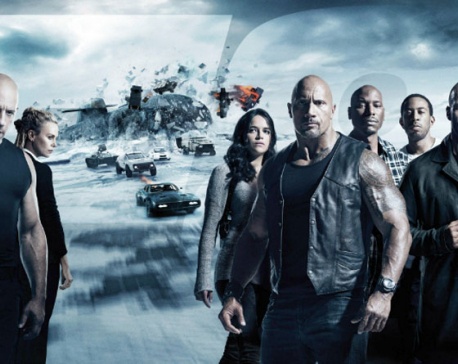
OR
Unsafe roads of Nepal
To internalize the great risk of speeding in our highways one need only board an outbound microbus at Kalanki. Hop on board one bound for Pokhara or Butwal. Then be prepared for a ride to hell. No sooner has the microbus left Kalanki, the driver guns it, madly twisting and turning the vehicle at unseemly speeds to avoid the rush of oncoming traffic. The most dangerous bit is not the demonic speed. It is rather the lack of concern of your fellow passengers, who seem blissfully unaware of the great danger to their lives, even while you can barely bat an eyelid lest the out-of-control vehicle should careen into the deep gorges below. Perhaps they protested with the unruly driver for the first few times, but they soon became inured to dangerous driving. Perhaps they feel they have no choice, the cost of catching a flight to their desired destination many times more expensive than the cheap road travel. The passenger buses that ply on our highways are unsafe too, and for the same reasons: chiefly speeding, overcrowding, treacherous terrains, poor roads and driving under the influence of alcohol.
As a result, every year 2,000 people die in road accidents in Nepal, according to the police. Such a high fatality rate makes Nepali roads among the most dangerous in the world. The government has at different times come up with different measures to make our roads safer. The latest such instrument was the National Road Safety Action Plan 2013-2020. It recommends a host of safety measures—from training drivers and road users, to improving driving license procedures, to more research into road accidents, to review of road permits. But even after the adoption of the action plan there has not been a significant reduction in road accidents. This goes to show that even the best of plans come to a naught without the political will to implement them.
Poor condition of existing passenger vehicles has been cited as one reason for frequent fatal crashes. One reason public vehicles are in such a bad state is because of the syndicates that control road transport in Nepal. These syndicates, which invariably enjoy strong political protection, have repeatedly thwarted efforts to make our roads safer. They insist that they be allowed to operate old and uncomfortable vehicles instead of importing new, more comfortable ones. They also won’t allow any new entrant in the long-haul passenger-vehicle market. Even if a driver is caught, say, speeding, his political bosses will see to it that he gets off with minimal penalties. Lack of political will also explains the poor condition of our roads. Conniving road contractors, again with close connections with incumbent government, are known to siphon off as much as 50 percent of cost of big road projects. The roads they eventually build are substandard, with the thin coat of black tar on top starting to come off on its first contact with heavy rains. Unless we have a system of holding our planners and policymakers to account, the lives of millions of Nepalis who travel by road every year will continue to be in great danger.
You May Like This

NC's loose performance due to power-centric politics, Dr Mahat admits
BHAKTAPUR, September 9: Nepali Congress leader Dr Ram Sharan Mahat has said that position of the Nepali Congress (NC) remains... Read More...

'Fast and Furious 8': Vin Diesel has his foot on the pedal, but others are running out of steam
A person with peroxide/platinum blond hair, some amount of digital prowess, and fuzzy ideas about bringing the superpowers to their... Read More...

Govt not to award Fast Track to foreign contractors: PM Dahal
KATHMANDU, Aug 29: Prime Minister Pushpa Kamal Dahal on Monday said that he will consult with experts on the issues... Read More...




Just In
- Govt receives 1,658 proposals for startup loans; Minimum of 50 points required for eligibility
- Unified Socialist leader Sodari appointed Sudurpaschim CM
- One Nepali dies in UAE flood
- Madhesh Province CM Yadav expands cabinet
- 12-hour OPD service at Damauli Hospital from Thursday
- Lawmaker Dr Sharma provides Rs 2 million to children's hospital
- BFIs' lending to private sector increases by only 4.3 percent to Rs 5.087 trillion in first eight months of current FY
- NEPSE nosedives 19.56 points; daily turnover falls to Rs 2.09 billion















Leave A Comment